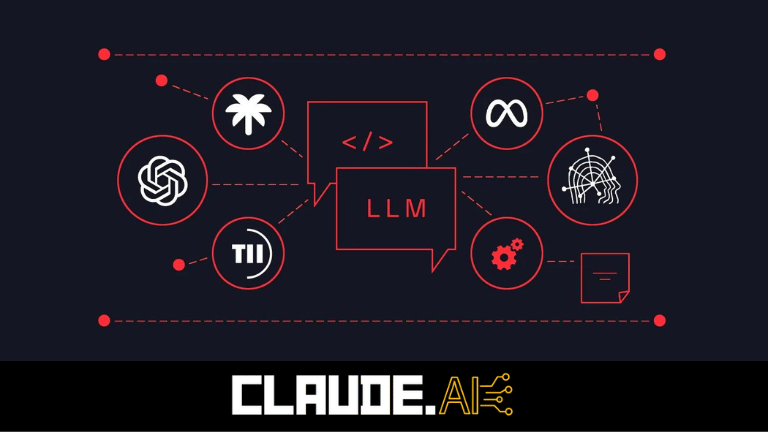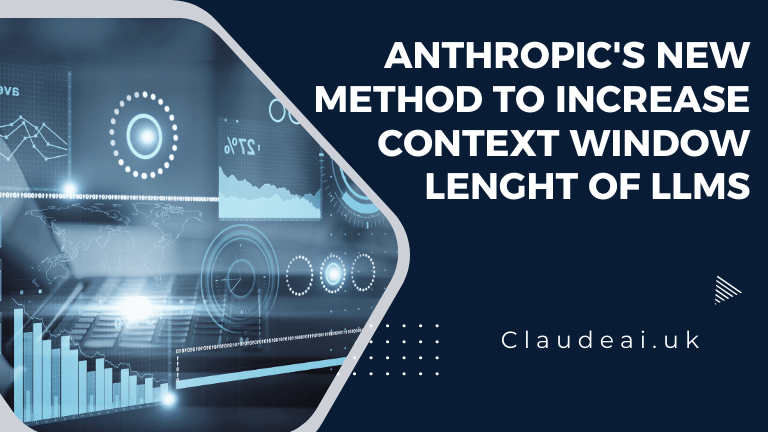Anthropic‘s New Method to Increase Context Window Lenght of LLMs! Recent years have seen rapid advances in natural language processing, thanks in large part to the rise of giant language models like OpenAI’s GPT-3. These foundation models have leveraged massive datasets and computational power to achieve impressive performance on a diverse range of language tasks. However, most have relatively short context windows—the number of tokens they can take into account when making predictions or inferences. Anthropic, an AI safety startup, is now poised to shake up the field with a novel method to significantly extend the usable context length for the next generation of LLMs.
Diving Deep into Model Architecture
At the core of Anthropic’s approach is a technique focused on model architecture itself. While brute-force context window extension results in a quadratic blow up in compute and memory costs, Anthropic employs sparse attention mechanisms to maintain efficiency while still allowing models to access thousands of tokens of previous context. This allows language models to deeply comprehend document-level discourse and dialog without losing the ability to reason about fine-grained linguistic structure.
Steady Progress Towards More Capable LLMs
The implications of this architectural breakthrough are immense. As models take into account more context, they grow more capable of tackling complex, multi-step tasks requiring long-term reasoning or planning. Anthropic’s Claude AI engineering team has already constructed a model with over 3,000 tokens of context on a single GPU-equipped server. Ongoing work is rapidly iterating towards support for 10,000+ token windows using efficient attention schemes.
Better Alignment through Understanding Instructions
There are also benefits for AI alignment and safety. Models with wider context have an easier time following complex instructions precisely as stated. This reduces incentivizes for misalignment stemming from models falling back on brittle heuristics or guessing incorrectly about intended behavior outside a limited context. More complete context comprehension leads to more robust model performance.
Pushing Past Perceived Limits of LLMs
For years, researchers argued extending context length for LLMs would be constrained by engineering challenges around computing hardware and model training. Anthropic is on track to conclusively push past these perceived limits using their innovative approach. Rather than brute force, they employ structured sparsity to capture what truly matters for learning and inference. The result is unlocking profound amounts of usable history representations while maintaining tractability.
Onwards and Upwards for LLM Capabilities
Anthropic’s Context Window Extension method is still in the early phases. But already it promises to expand conceptions of what may be possible with LLMs in practice. Momentum continues building towards models that can tackle tasks across documents, multi-party conversations, complex problem solving scenarios and more. It sets the stage for AI systems with comprehension and reasoning capabilities far beyond the current state-of-the-art. For the teams developing the next generation of LLMs, this new technique shatters assumptions about context limitations. It’s now clear much wider windows are within reach, opening new frontiers in advanced language intelligence.

FAQs
What is context window length in natural language processing?
The context window length refers to the maximum number of tokens an LLM can look back on to inform its predictions or inferences. Typically this ranges from 512 to 2048 tokens.
How does Anthropic extend the usable context length?
Anthropic uses sparse attention mechanisms that selectively focus on the most relevant prior tokens. This allows efficient scaling to windows of 3000+ tokens on modest hardware.
What are the benefits of longer context windows?
Wider windows allow better performance on tasks requiring long-term reasoning, like legal contract analysis or technical document comprehension. It also improves adherence to complex instructions.
How have previous models been constrained in context capacity?
Brute force extension of context length causes a quadratic explosion in compute and memory. At a point engineering limitations around hardware became prohibitive.
How does Anthropic overcome these computational constraints?
Through algorithms leveraging power law distributions of relevance and judicious application of attention. Together these allow linear scaling of context length rather than exponential.
Why is maintaining tractability important?
Practical applications require models that fit on available hardware. By preserving tractability, Anthropic makes large context accessible under real-world operating conditions.
What types of tasks become more feasible?
Document-level QA, multi-party dialog, contract generation, technical writing from long specifications, source code documentation and more.
Does wider context improve model alignment?
Yes, reduced hallucination and safer reasoning due to adhering to instructions over thousands rather than hundreds of tokens improves alignability.
How is relevance of past tokens determined?
Learned sparse attention patterns focus only on the most salient history while ignoring irrelevant tokens using power law distributions.
Will further improvements be possible?
Anthropic is pushing boundaries but techniques like sparse expert parameterization may yield even wider context windows in the future.
What room for expansion exists?
With engineering obstacles eliminated, optimal context length likely correlates to language use cases rather than fixed assumptions. There may be no true upper limit.
Are there risks from unlimited context access?
Unchecked context expansion could enable harms, highlighting why research at Anthropic also focuses on developing safe and beneficial AI.
How was Anthropic able to make these discoveries?
Through a unique emphasis on aligning advanced capabilities with human values as an essential prerequisite for responsible LLM progress.
Who spearheaded this work?
Anthropic’s founders Dario Amodei, Daniela Amodei, Tom Brown, Chris Olah, Sam McCandlish, Jack Clarke and Jared Kaplan.
What are the next steps in this research area?
Building on these innovations to continue pushing boundaries of beneficial, safe and exceptionally capable LLMs.

